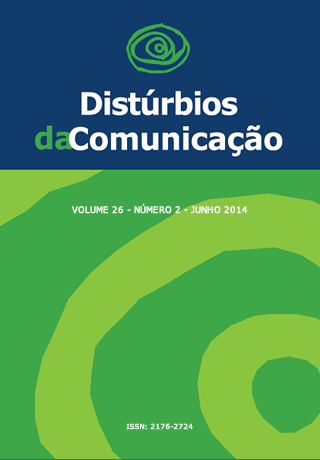Audiological characterization of adults with Down Syndrome
Keywords:
hearing, population characteristics, Down syndrome.Abstract
Introduction: The expanded lifespan of people with Down’s syndrome has shown a premature aging of these people, associated to chromosome 21, which makes it important to highlight the hearing alterations, once they can interfere in the communication process. Objective: Characterize the hearing abilities of people with Down’s older than 25. Material and method: 40 people with Down’s were evaluated through visual analysis of the external acoustic meatus, impedance audiometry and tonal audiometry. Results: out of the 40 adults, 12 presented excessive earwax, possible to be removed in 8 of them; 35 allowed the impedance audiometry, 27 could respond correctly to the tonal audiometry. Among the ones with whom the tonal audiometry was conducted: standard hearing thresholds were observed between the ages of 25 to 30 and 30 to 40 and sensorineural hearing loss between 40 to 50 and 50 to 60. The prevailing audiometric result was the descendant one between 40 to 50 and 50 to 60; tonal averages were higher in the highest frequencies of the audiogram, however indicating a standard deviation which shows heterogeneity of the results for the studied group. Conclusion: hearing loss compatible to presbycusis in Down adults, in ages under the ones described in the literature, was observed.Downloads
Metrics
Downloads
Published
Issue
Section
License
Copyright (c) 2014 Marcela Renostro Biasus, Carolina Klippel Almeida, Débora Frizzo Pagnossin, Ruy Xavier Neumann

This work is licensed under a Creative Commons Attribution 4.0 International License.









